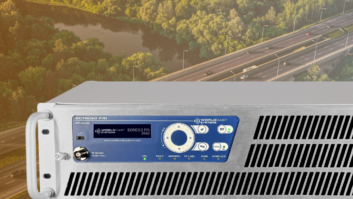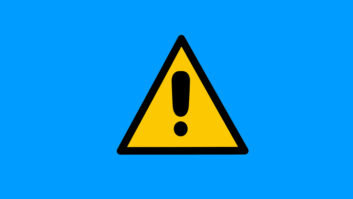The author is chairman of Digital Radio Mondiale.
GUEST COMMENTARY
How important is the role of broadcast regulators and do we need them? Some people think so.
Recently we met with representatives of an important African regulator interested in the digitization of radio in their country. The organization’s information gathering tour seemed to be far-reaching and well planned and their objective huge: To propose an appropriate radio digital solution for the foreseeable future.

One way of doing this is to look at what others are doing. This however raises many questions due to the unique aspects of each country. For example, is Norway and its DAB+ decision the right model for large, geographically and ethnically diverse territories like many African countries? Or would DRM, which can be used in all bands, be more appropriate, emulating what is happening in India? Or maybe the use of both standards is the right solution. Whatever the answer, each regulator has the responsibility to make these decisions based on its own country specifics and can’t necessary apply what is working well elsewhere.
It struck me that broadcast regulators come in different shapes and sizes and with diverse names. A cursory look at the list of world regulators shows them to be commissions, councils, offices, even institutes or full ministries. In their great majority they are though “authorities” that regulate terrestrial broadcasting, telecommunications, often postal services and in some few, bizarre cases are paired with transport (Tajikistan) or other branches of government like internal affairs (Japan).
[Read: DRM Receivers Find Place in the Car]
Some of them are well known, like the FCC in the United States, Ofcom in the United Kingdom and Bundesnetzagentur (BNA) in Germany. Other regulators are just starting to make their mark, such as TRAI, the regulator in India. Recently TRAI was in the news owing to a strong recommendation it published on the digitization of VHF and of radio itself in India. This certainly brought the Indian organization to the attention of the broadcasting sector and industry. But it is only a recommendation. Broadcasters and, ultimately, the Ministry will have to take the final decision. It also serves as a good example of where regulators often sit: between politicians, broadcasters, industry and users.
So, what are regulators for? The answers vary hugely. They seem to be advisor and enforcer, in equal measure. They propose solutions, inform policies that come then back to them, often changed, and which they have to implement by transforming them into regulations. On a day-to-day basis, they often manage spectrum, licenses and police the whole eco-system independently or sometimes at the behest of the day’s government.
The power of regulators — on paper at least — is wide-ranging, as they roughly regulate one of the most dynamic, influential and lucrative areas of current human activity, i.e. communication, or part of it. They also administer one of the invisible but most valuable national assets, spectrum. A frequently asked question is how independent they are. Whether they are “star-gazers” or “spectrum policemen” depends a lot on the democratic strength of the system in which they operate and on how they are funded (government, industry, combination of the two). It is certainly not easy to be technology or politically neutral.
Lately regulators have faced two extra challenges. One has to do with the vast area they do not regulate, the whole Internet, social media domain. The FCC is contemplating changing or even lifting the ownership caps — the number of radio stations that can be owned by one individual or entity in one area, which has been unchanged for a long time.
One argument put forward is that deregulation is needed for broadcasters to compete with Facebook, Google and other unregulated digital companies eating into the finite advertising pie. Otherwise, some believe radio, in particular, will die. So, deregulation and fair competition with investment in local and live content and new technology will guarantee its future and maintain its unique essence, is one of the strong opinions expressed in the U.S. We will see how this pans out in June and if deregulation can boost radio and strengthen its localism, diversity, the live element that listeners value. FCC might be searching for a compromise.
In the U.K., Ofcom CEO Sharon White threw her weight fully behind another sector under siege from companies like Facebook, Google, Netflix: the public broadcasters. In March 2018 she referred mainly to TV but her admission is wide-ranging: “in any sector, regulation can only go so far. And in the longer term, the value of terrestrial airwaves, …. will decline. That means that public service broadcasters must keep adapting for the digital age.” Her solution is cooperation.
The second challenge faced by regulators, alongside the changing landscape in which they operate with a shrinking portfolio, is to do with time itself. Often their preferred and totally sensible solutions and decisions become obsolete over time. Ofcom, like many other regulators, realizes that it needs to support not only the bigger public and commercial broadcasters but also the local, commercial or community stations, which keep the flame and essence of radio alive.
And these local players certainly give regulators in the U.K. and elsewhere, embarking on digitization, a headache. At first, they were often not included in the planned digital future and were kept quietly in their analog stable. Then they started creating problems especially in countries where a multiplex solution is favored. In the U.K. a small-scale version of DAB has been tested and retested since 2012 in order to give DAB full national preeminence.
Tests continue, as more results are required, and the Ministry of Culture, Media and Sport (DCMS) is now considering how to proceed with the integration of the smaller digital players, for which DRM also offers an alternative by using the FM band or band III and maintain the existing channelization and, possibly, infrastructure. So far, DCMS has not made any announcement but the consensus seems to be to keep analog and digital. A possible compromise and also a delay for digital.
Regulators have the unenviable task of listening to all parties with an open mind. Then they must remain neutral and nimble. Otherwise they face the danger of losing broadcast land to regulate, time to implement and ultimately, relevance and independence.







